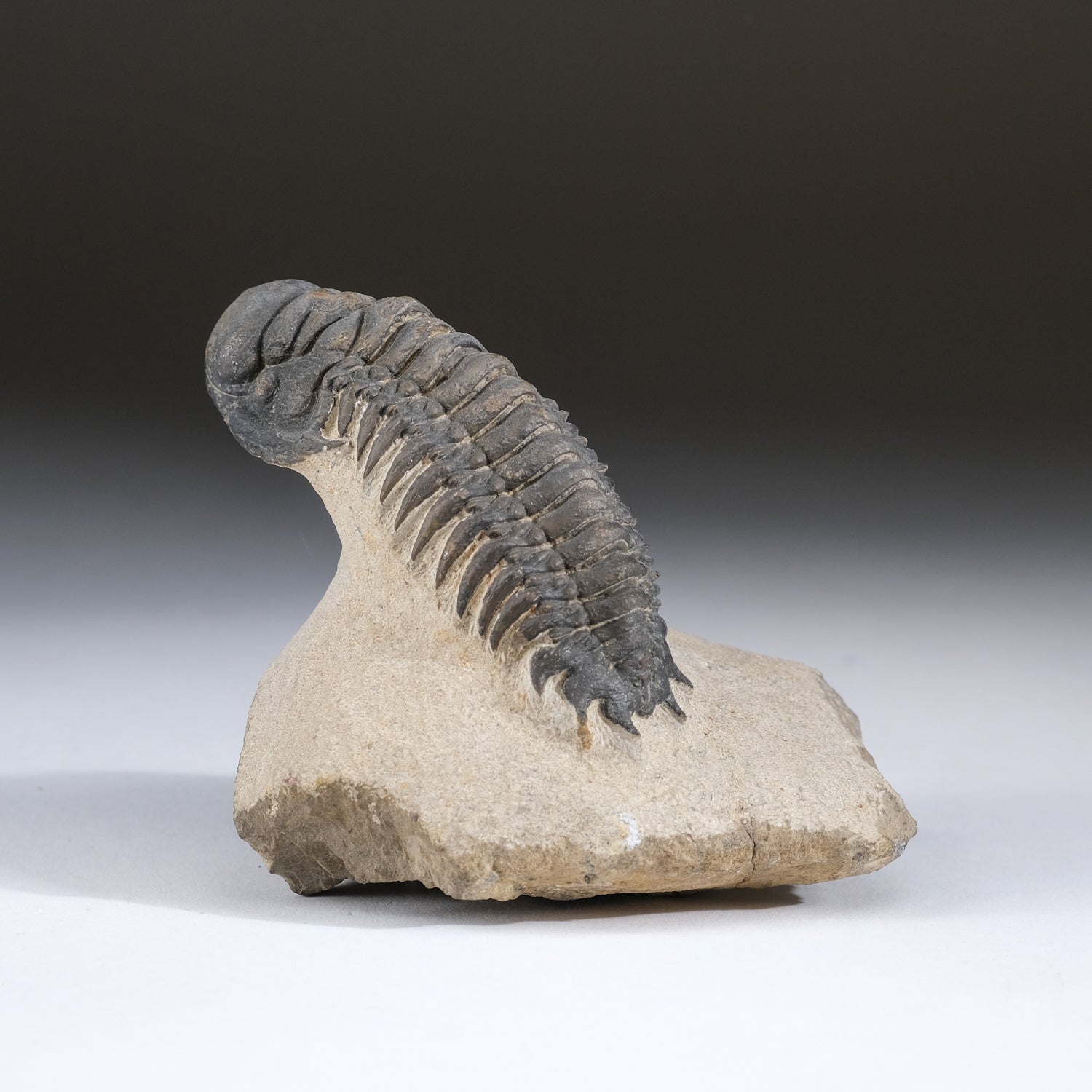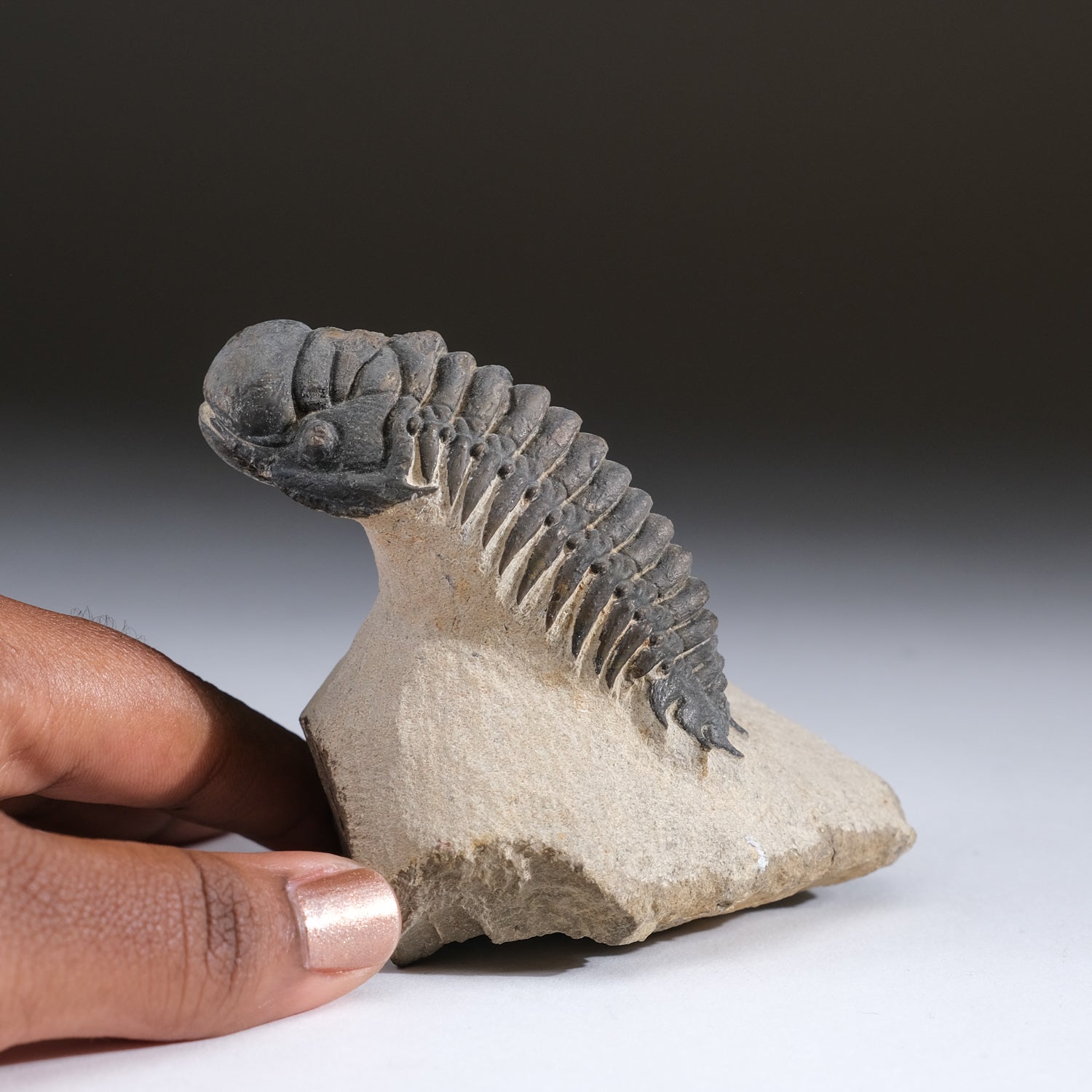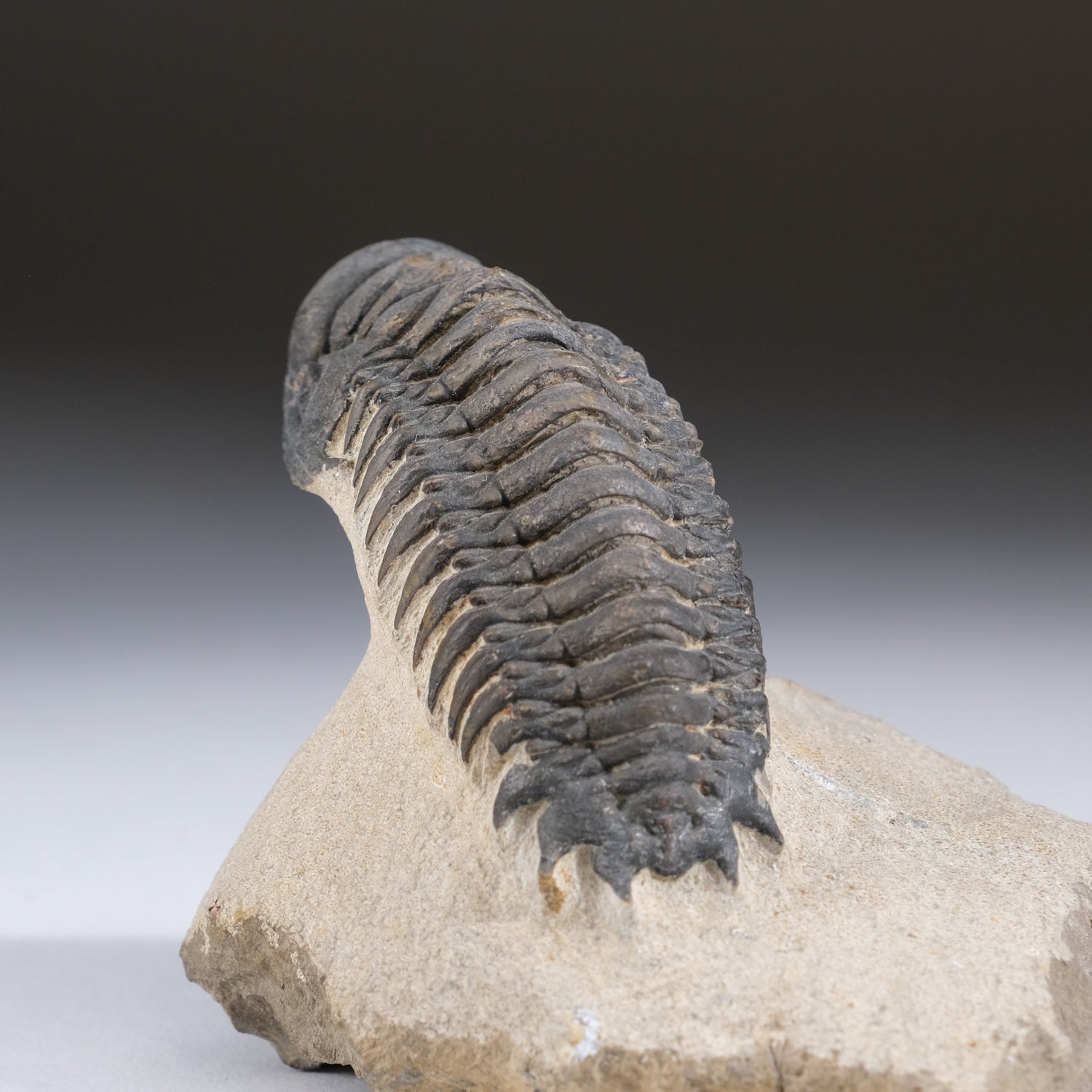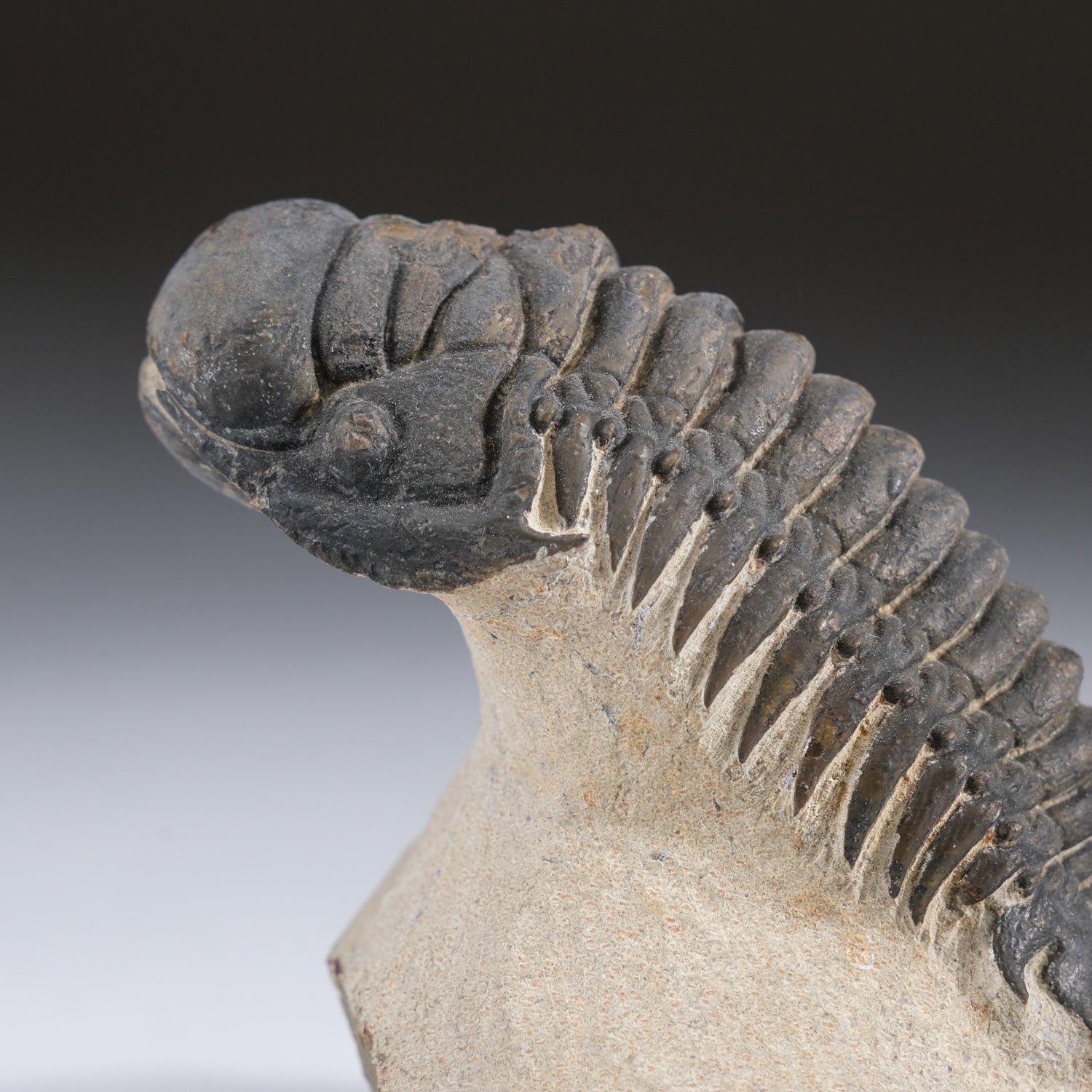
Asaphus intermedius Trilobite on Matrix from Morocco (346.2 grams)
Trilobites, an early arthropod relative of spiders, horseshoe crabs, and scorpions, preserved in this level of detail only occurred as a result of very sudden underwater landslides called turbidite sequences, which ravaged the early earth when the continents were still very much on the move. The contorted body positions of the trilobites demonstrate a final fight against being buried alive.
The Asaphid trilobites include some of the most extreme trilobite adaptations known, and the group produced some of the largest trilobites ever. Asaphus intermedius is known for its highly stalked compound eyes. This adaptation becomes even more apparent in its stark contrast to the lack of ornamentation over the rest of the animal's body. This is because Asaphus was a response to new predatory threats: instead of swimming away, these trilobites buried themselves in the sand and watched, using their periscope eyes, for the coast to be clear.
Species: Asaphus intermedius
Age: Middle Ordovician: 477- 467 MYO
Location: Djbel Ougrat, Morocco
Size: 3.5 x 2.5 x 2.75 inches
Weight: 346.2 grams





